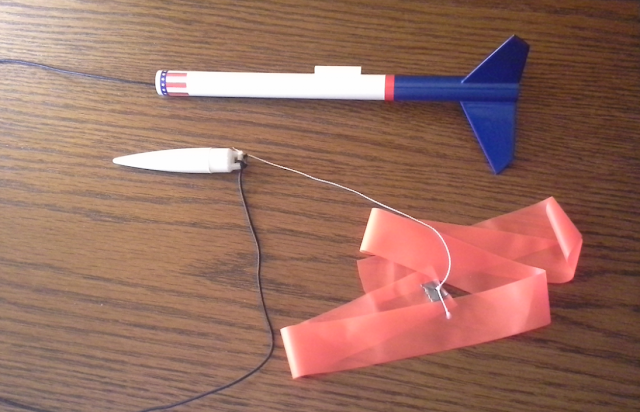
Sport Model
High PerformanceMPC Kit Clone
Designed by G. Harry Stine
Date Completed: 14 September, 2017
Diameter: 13.7mm
Weight: 10.2g
Fins: 3
Nose cone: Tangent ogive, Approx. 4.1 Caliber
Color scheme: white, dark blue with red and dark blue trim
The original kit was introduced back in 1971 as part of MPC’s Mini-Roc product offering. These birds were powered by a new line of 13mm engines in the 1/2A to B total impulse ranges. At the time, competition modelers using these new minimum diameter 13mm birds and engines essentially re-wrote the NAR record books, especially in the low-power altitude categories. The Super-Star was easily capable of an ‘out-of-sight’ flight on a B3 engine.
My build started with the plans being downloaded from the ‘Ye Olde Rocket Plans’ website, and dimensioned around an Estes BT-5 body tube. I really enjoyed reading through the kit instructions. They were obviously written by Mr. Stine himself –full of, well…Stine-isms! It was as if one was reading a chapter straight out of the Handbook of Model Rocketry, except it was dedicated to a single model design.
Construction was fairly straight forward. Initially, I had intended to turn the nose cone on the lathe, but I plopped on a spare Estes PNC-5AW cone I happened to have hanging around, and found that it would be quite serviceable. Of course, this takes the model out of the ‘exact replica’ category, but I’m not overly concerned about that.
A small amount of clay weight was pressed and CA’d into the tip of the nose cone to give the bird a little more front-end ‘ballast’.
Since I am strictly a sport flier, I opted not to sand an airfoil into the fins, rounding the edges instead. I also slapped on a standard launch lug. This bird will go plenty high enough for my purposes without all of the performance optimizations.

The endeavor worked out pretty well for a 60+ year old guy who has to wear reading glasses in order to see anything at all!
Overall, the Super-Star build produced a nice looking bird that I am proud to have in my fleet. It will definitely be on the launch pad at the very next flight session.
